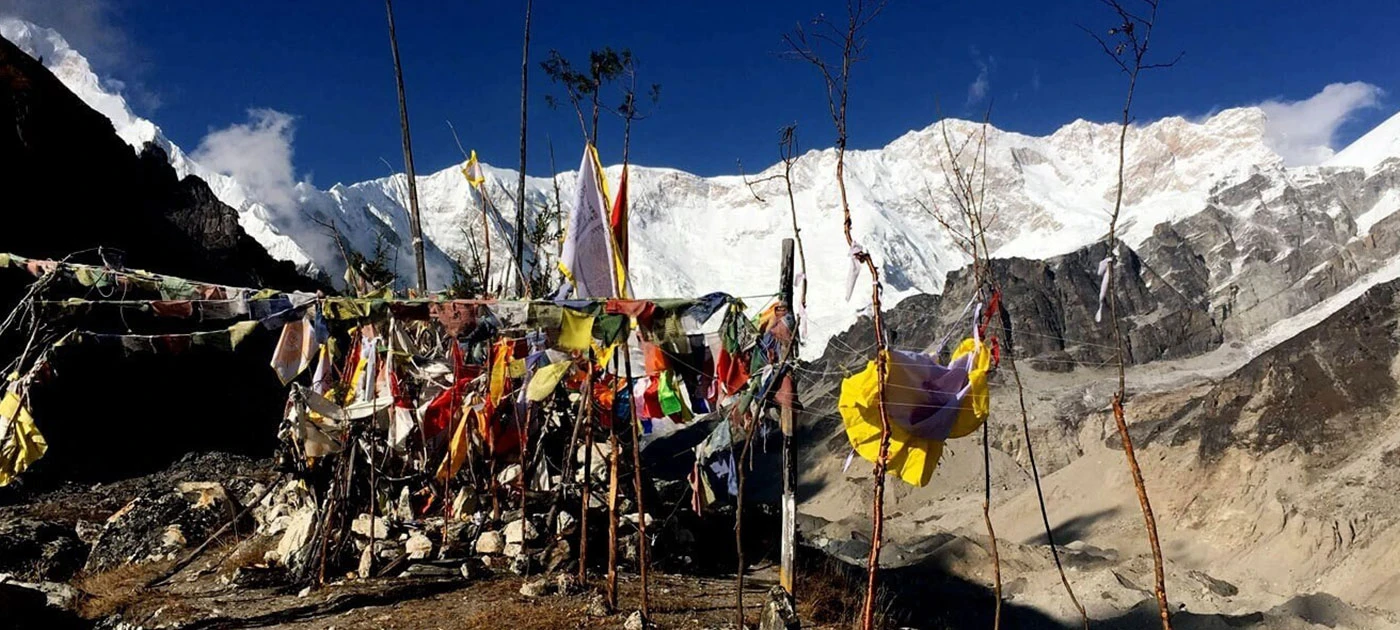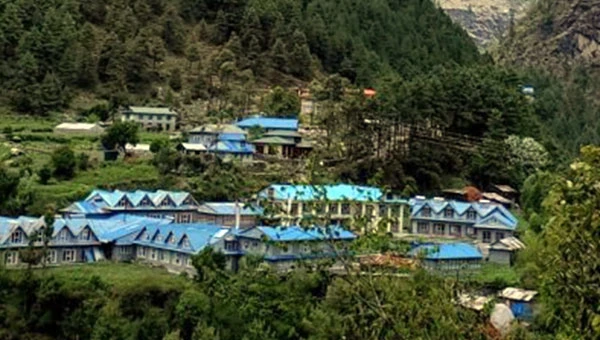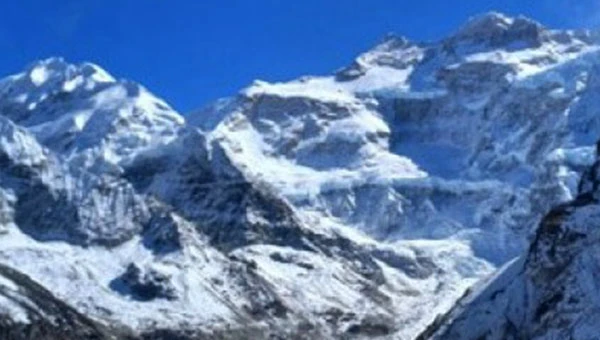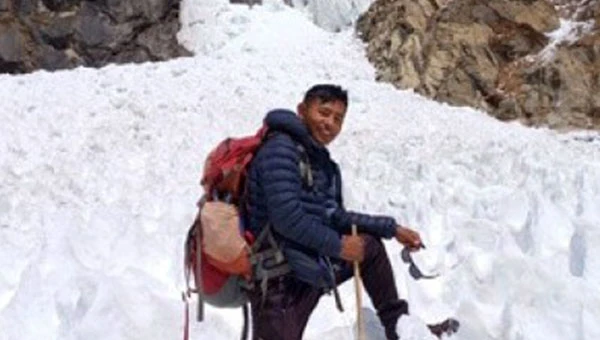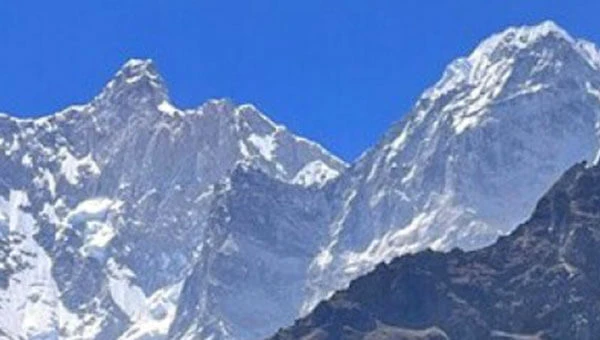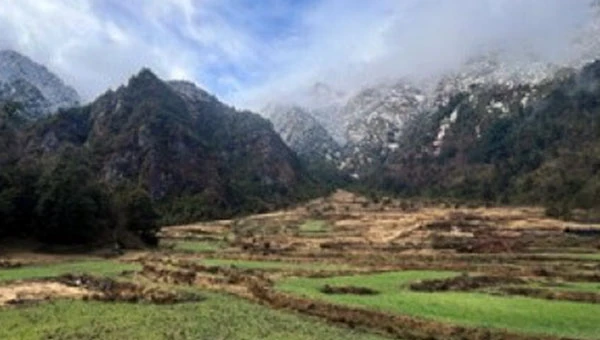What is the uniqueness of the Kanchenjunga Base Camp Trek?
The Kanchenjunga region has always charmed travelers with its natural wonders and multiple cultural heritages. Apart from the difficulty level of the Kanchenjunga trek itself, it is an extremely popular trail that meanders through beautiful valleys to rugged mountain landscapes. A picturesque ambiance with spectacular views of the Himalayas and lush forests bearing rare flora and endangered wildlife is set here. Some reasons compel one to embrace the trek:
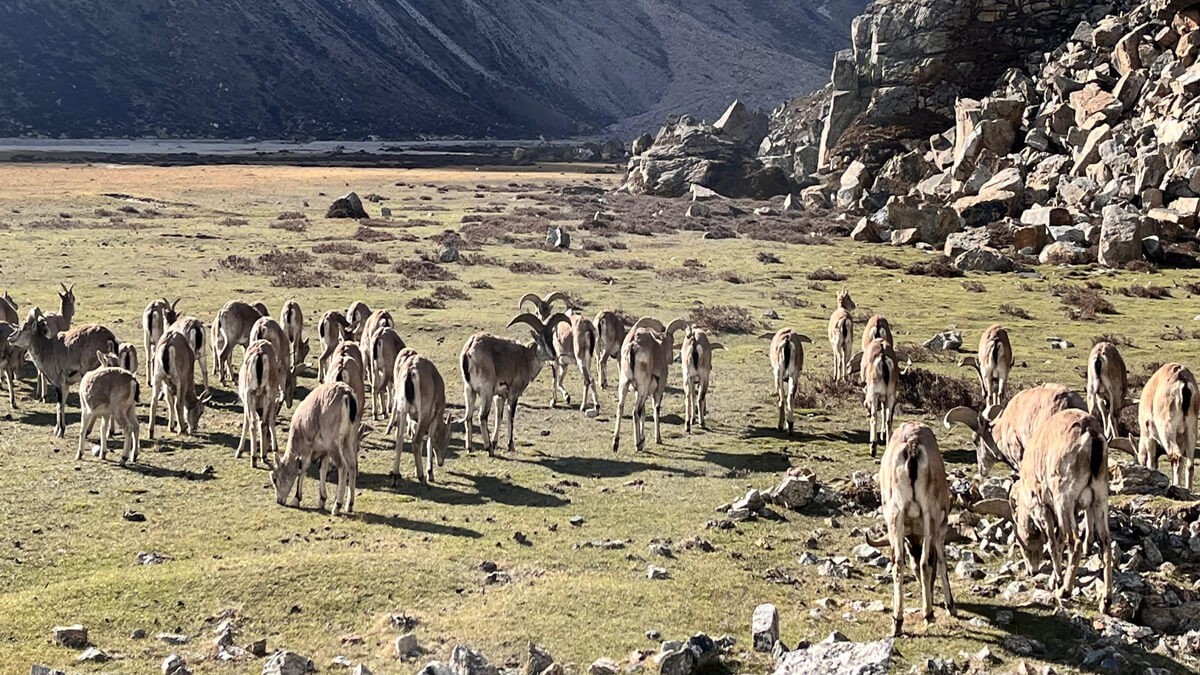
Escape the Crowds and Embrace Authentic Adventures
Soak in nature’s charm without interruption by the massive population on the trails of the Kanchenjunga Base Camp trek, away from the monotonous tourist routes, allowing you to enjoy harmony and seclusion. Most people love to take only photographs of breathtaking scenery, whether nature enthusiasts crave to spend time reading or relaxing by listening to the roaring sound of rivers, birds’ chirping, and the noise of cascading waterfalls along the Kanchenjunga region’s paths. Therefore, it is a perfect way to encounter Nepal like never before, beyond the ordinary, with Blossom excursions.
Pristine Natural Beauty
Beyond the chaos of swarming urban hubs, you can enjoy the surreal charm of distinct, unspoiled landmarks during the Kanchenjunga Base Camp trek, from verdant woodlands rich in diverse flora to picturesque valleys to stark mountain ridges. Majestic Himalayas towering in crystal skies, such as Mt. Kanchenjunga (8586 m), Kanchenjunga South (8476 m), Mt. Jannu (7710 m), Kabru Peak (7412 m), Rathong Peak (6678 m), etc., make your heart smile and feel spiritual relief in unblemished landscapes without the influence of large-scale tourism. Giant hills, majestic peaks, winding rivers, incredible waterfalls, green forests, and crystal-clear glaciers like Yalung Glacier, Ramche, and Tortong captivate you the most throughout the journey.
Experience authentic cultures.
The Kanchenjunga Base Camp trek is not just about outstanding Himalayan landmarks. It takes you to remote and secluded mountain landscapes where people, influenced by Tibetan Buddhism, enjoy their lives with unique cultural conduct beyond the unnecessary hustle and bustle of the hectic cities. You will be walking through the trails adorned with ancient Buddhist monasteries, mani walls, chortens, and prayer flags reflecting the profound spiritual practices of the community. It is home to Sherpa, Rai, Limbu, etc., who are kind and delightful, behave well to tourists, and provide warm hospitality.
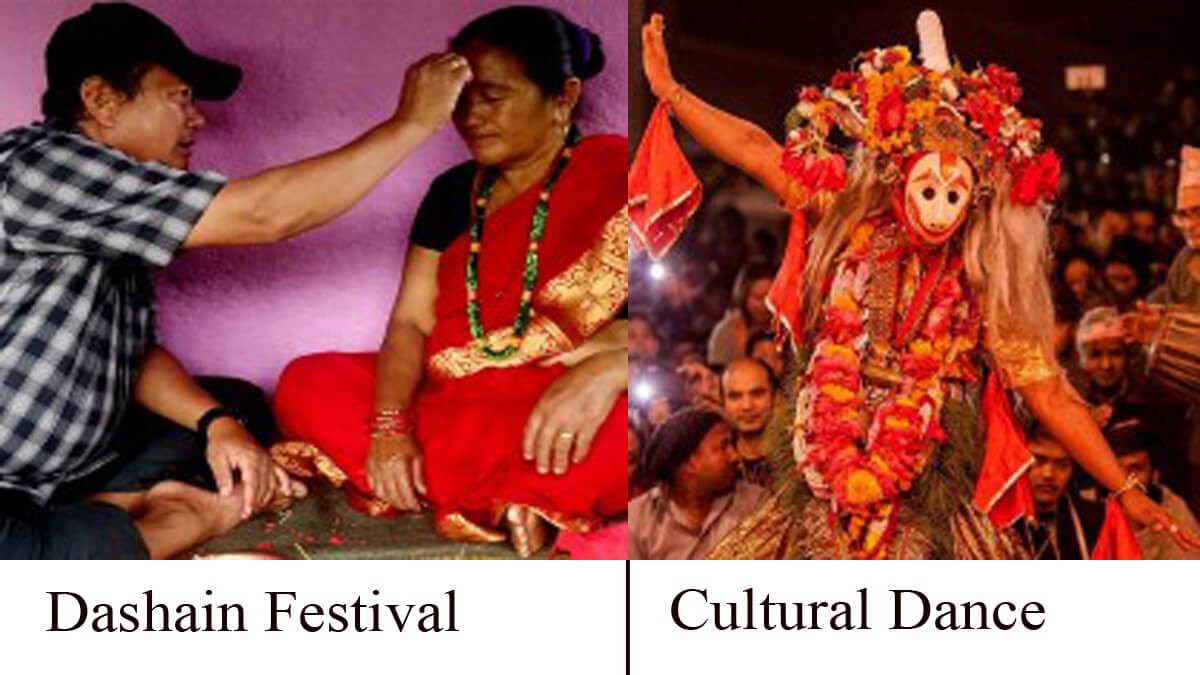
They have traditional dances and folk music, earning this town the epitome of charm and heritage. Their interaction provides you with a golden opportunity to learn more about untouched cultural heritages and festivals that are relatively less influenced by tourism, making this journey not just an ordinary journey but one of cultural ties and gratitude.
Unparalleled Adventure and Personal Growth
Unlike popular trekking destinations like Everest or Annapurna, you should adjust to basic teahouses with basic facilities due to limited transportation access and challenging terrains. The Kanchenjunga trek difficulty level is average to strenuous through off-beaten paths with less marked trails and routes that require more self-dependency and map-reading proficiency. This Kanchenjunga odyssey brings forth your dream of discovering the hidden treasures of Nepal and molds you on a personal level, discarding normalcy and taking on the extraordinary. After completing the trek, you have profound satisfaction and a strong bond with nature.
What difficulties may one encounter walking the Kanchenjunga Base Camp Trek?
This iconic trek is the confluence of nature, culture, and adventure. However, many factors affect the trek's difficulty level, such as the region's landmarks, climate, season, weather, and the length and duration of the trek. Therefore, the trek itself is moderate to well-strenuous. It starts with an off-road and thrilling Jeep ride, proceeds through forest trails and scenic villages, and crosses multiple rivers into the Kanchenjunga conservation area.
Physical Challenges during the Kanchenjunga Base Camp Trek
One of the most critical aspects of the Kanchenjunga Base Camp trek difficulty is the physical challenge during the Kanchenjunga trek. The trek requires extra stamina to traverse several demanding landscapes and high mountain passes. Generally, the trek starts from Taplejung, and hiking for 5 to 6 hours daily may make you exhausted. Novice trekkers must prepare well to face all these challenges, while seasoned travelers conquer the journey easily despite its difficulty.
Mental Challenges during the Kanchenjunga Base Camp Trek
Kanchenjunga trails pass through some of the most isolated regions with less linkage to your nearest ones, making you feel lonely. If you are not mentally ready for seclusion and immersion in tranquility, you may lose hope of accomplishing the journey. Similarly, you must constantly push yourself forward and maintain an optimistic attitude, even in distracting situations.
Walking for a continuous span away from home can be mentally exhausting. The unpredictable weather conditions of the Himalayas, including rain, snow, and freezing temperatures, can strengthen your mental toughness. Moreover, walking in landscapes exceeding 5,000 m creates obstacles like mountain sickness, poor sleep, dizziness, and mental fog that can disappoint you before you accomplish the journey. Therefore, you should be ready for these mental challenges during your journey because of the difficulty of the Kanchenjunga route.
Altitude Sickness during the Kanchenjunga Base Camp Trek
Some travelers may suffer from high-altitude sickness while walking in the Himalayan landscapes exceeding 3,000 m due to thin air and lower oxygen levels. Since the Kanchenjunga Base Camp trek reaches high-elevated areas, including North Base Camp (Pangmema Base Camp (5,140 m), South Base Camp ( Oktang Base Camp (4,730 m), and Sele La Pass (4,290 m), there is the possibility of high acute sickness that makes the journey more challenging for the body to perform typically.
If you ascend without allowing your body to acclimatize, it can affect anyone, regardless of age, prior trekking experience, or fitness level. Sometimes, it stops the trip altogether, impacting the group’s progress. While proceeding on the trek, you may also reach the extremely remote region of Kanchenjunga, where you have less access to medical evacuations. At that time, altitude sickness can destroy your dream of accomplishing it, as it is also a factor in the Kanchenjunga Base Camp trek's difficulty.
Long Duration
The Kanchenjunga trek is a perfect choice for those seeking treks of prolonged time away from home since it is one of the longest journeys that can be completed within 19 to 25 days. Some trekkers can be stressed during the journey due to the Kanchenjunga Base Trek's Length and Difficulty. You have to walk 5 to 6 hours to relish the charm of great mountains, including the five highest mountains over 8,000 m, also known as the five treasures of the Great Snow (Kanzenjunga Main, Yanlongkhang, Kanchenjunga West, and Twin Peaks). It is also one major factor of the Kanchenjunga trek difficulty level that makes you feel disappointed if you are not physically and mentally sound.
What Does It Take to Conquer the Kanchenjunga Base Camp Trek?
Physical Preparation: How can you prepare physically for the Kanchenjunga Trek?
The Kanchenjunga Base Camp Trek is more strenuous than other famous trekking routes like the Everest Base Camp or the Annapurna Base Camp Trek. If you have prior hiking experience in high-altitude landscapes, it will be easier to navigate the trail. Despite its difficulty, you can prepare physically before embarking on this trek. It will help your body face the issues while passing through the Kanchenjunga Conservation Area and other high-elevated and off-the-beaten paths.
Do cardiovascular exercises like hiking in high-altitude terrain, jumping, running, swimming, etc., which assist in avoiding altitude sickness due to thin air and lower oxygen levels. The Kanchenjunga trek requires physical fitness because of the remote region with steep ascents and descents. Prolonged walking may cause pain, sore ankles, blisters, and sore muscles. So, could you give 100% on workouts to go on quick treks to delve into the core of the Kanchenjunga?
Mental Preparation: Can you make the Kanchenjunga Base Camp Trek easily?
The Kanchenjunga Base Camp trek is one of the longest trekking routes in secluded Himalayan trails, with a lengthy day hike of 5 to 6 hours, which is not just a physical endeavor but also a mental pressure. Continuous walking in the wilderness region without connecting to family members leads to loneliness and isolation. So, could you bring stories, novels, or journals to note activities during the journey? Similarly, you can take games to play with fellow trekkers or involve yourself in entertainment such as dancing or singing that gives you mental peace and encourages you to continue the trip, lifting you while feeling down.
Sometimes, while traversing high mountain passes, the situation makes you more exhausted and in pain from all the walking with Kanchenjunga altitude challenges, leading you to give up. Therefore, you should foster your mental strength to overcome the Kanchenjunga difficulty. In conclusion, meditation and yoga practice enrich your cardiovascular and physical well-being.
Acclimatization: How do we handle thin air?
The Kanchenjunga Base Camp trek passes through the high-elevation terrains of the Himalayas. So, you should slowly ascend without rushing to reach your destination. On the other hand, you must provide adequate time for your body to adjust to the environment, which helps to avoid high-altitude sickness during the journey. According to the customized itinerary of the Nepal Adventure Team, you will pause at Ghunsa as an acclimatization day since you will gain more elevation from here.
-
Give your body enough time to acclimatize before heading to the high-elevation mountain landscapes, including Sele La Pass (4290 m).
-
Drink sufficient water to keep yourself hydrated. But stay away from alcoholic substances.
-
Don’t ignore your body; if you feel any symptoms, descend to the lower points.
-
Keep in touch with your fellow trekkers, and take essential contacts for emergency medical evacuations.
-
Bring a first aid kit containing some medications for high-acute sickness.
Symptoms include headache, dizziness, nausea, vomiting, chest tightness, breathing problems, and difficulty sleeping.
Essential Gear: What You Need to Pack for the Kanchenjunga Base Camp Trek?
This tranquil walk takes you through off-the-beaten paths in the Himalayan landscapes, where the weather is unpredictable. So, your packing list should be carefully customized to match the particular weather conditions of the season during which you plan to take the trek. You should bring season-appropriate trekking clothes and gear to counter the weather-related challenges during these periods. Despite the Kanchenjunga Base Trek Length Difficulty, you can enjoy the thrilling trip of Kanchenjunga with the right trekking gear. Below, we have provided clothes and equipment you may need for the Kanchenjunga Base Camp Trek to take a look at. Here are the essentials that you may need on the journey:
Autumn Essentials
- Thermal base layers, fleece, and down for layering.
- Outer waterproof shell in case of rain.
- Comfortable hiking boots with gaiters for dusty trails.
- Warm hats, gloves, and buffs for the elevation.
- Sunglasses and sunscreen protect against higher UV rays.
- Sleeping bag for sub-zero temperatures.
Spring Essentials
- Underwear, moisture-wicking base layers.
- Insulated jackets for the cold mornings and evenings.
- Waterproof jackets and pants for spring showers.
- Good hiking boots with grip.
- Sun protection includes sunglasses, sunscreen, and a wide-brimmed hat.
Monsoon Essentials
- Quick-dry clothes (don't use cotton)
- Top-notch waterproof apparel like jackets, trousers, and backpack covers
- Trekking poles for slippery paths
- Waterproof hiking boots and spare socks
- Insect repellent + light rain cover
- Light layers for warmth at mid-lower altitudes.
- Winter Essentials
- Heavyweight thermal base.
- Insulated down jacket and pants.
- The outer shell (highly waterproof and windproof)
- Winter-grade hiking boots (ice sections).
- Thick gloves, balaclava, warm beanie.
- Extreme cold-rated sleeping bag (-15 and below).
- Hand warmers and a thermos for hot drinks.
What Permits and Logistics Do You Need for the Kanchenjunga Base Camp Trek?
Every trekker must take a Trekker’s Information Management System ( TIMS) card that monitors trekkers’ locations and movements to ensure safety. Since the Kanchenjunga region is a restricted area in Nepal, you need a Kanchenjunga Restricted Area Permit (KRAP). Similarly, as you walk through the sections of the Kanchenjunga Conservation Area, you need an entry permit. Its purpose is to conserve the fragile ecosystem of the region. You can obtain these permits through registered trekking agencies like us from the Nepal Tourism Board in Kathmandu or at the entry point in Taplejung.
You should be able to connect with a reputable travel company that can handle, in a significant way, permits, transportation, and accommodation during the trek. Moreover, it is best to begin early in the morning to avoid walking in the darkness. Don’t forget to carry extra Nepalese currency, as ATMs are unavailable beyond Taplejung. Carry extra cash (Nepalese rupees) as ATMs are unavailable beyond Taplejung.
Choose an ideal period: What is the best Kanchenjunga trekking season?
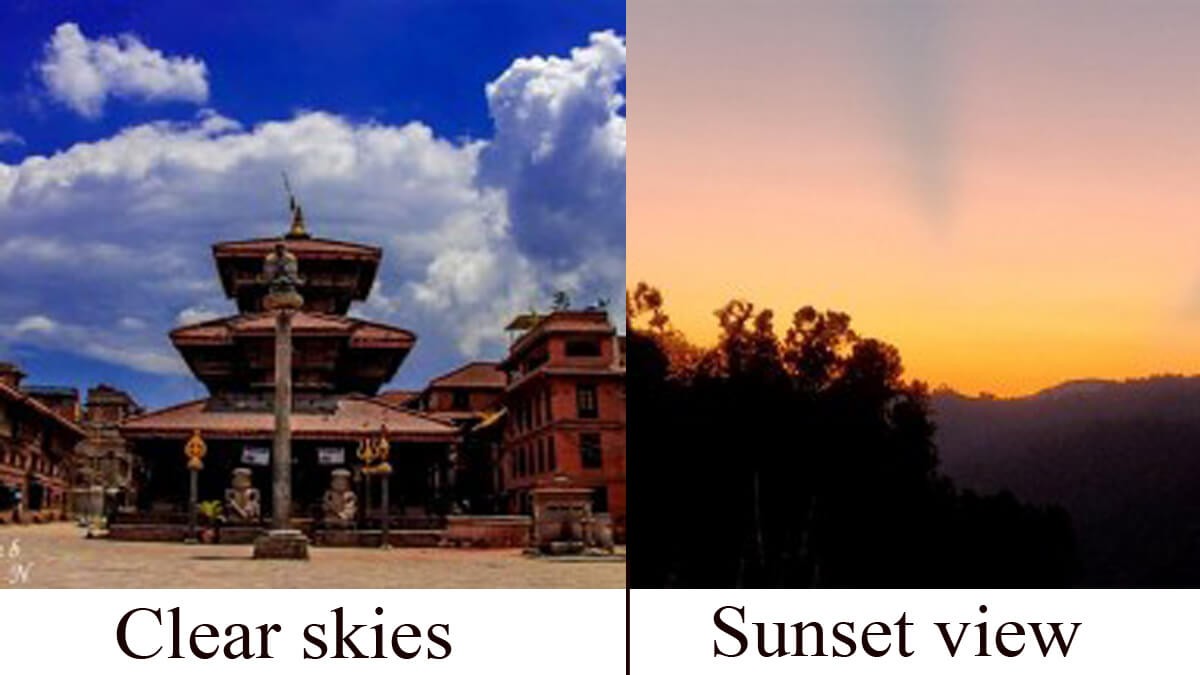
Why is the spring season (March-May) ideal for the Kanchenjunga trek?
The spring season is a blooming paradise when travelers can enjoy the odyssey with fantastic scenery full of blooming wildflowers that spread fragrance everywhere, making the environment more attractive. The weather becomes more stable with mild temperatures and clear blue skies, and tackling the challenges of the Kanchenjunga altitude is easier. It is an ideal time to embark on the Kanchenjunga Base Camp trek for spectacular mountain vistas. Nonetheless, because of its erratic weather, you should be cautious while planning a trip to the Himalayas. Carry essential equipment for any circumstance that may occur during the journey.
What does the autumn season bring for the journey?
Autumn is a precious time for traveling to most destinations in Nepal. It has great weather. Skies sparkle in bright views of majestic peaks like Mt. Kanchenjunga(8586m), Kanchenjunga South(8476m), Mt. Jannu(7,710m), Kabru Peak(7,412m), and Rathong Peak(6,678 m). Trekkers may also enjoy perfect trekking in this season as they also celebrate national festivals such as Dashain, Tihar, and Chhath during that time.
Why is the Kanchenjunga trek more difficult during the off-seasons (winter: Dec to Feb and monsoon: June to August)?
Risk-bearers love to embark during the off-seasons, such as winter and monsoon. In the monsoon season, many places get heavy rainfall except in rain shadow regions like the Upper Mustang and Upper Dolpo regions. Similarly, the Kanchenjunga Base Camp treks become difficult in summer as rain makes the path slippery. You can’t enjoy the views of the peaks because of the clouds and rain.
This region has several rugged and steep terrains, requiring caution. Similarly, you have to face more challenges during winter with its cold air, freezing temperatures, clouds, and fog. It is better to trek in the Annapurna region, which is less challenging than the Kanchenjunga Base Camp Trek.
Select the perfect Kanchenjunga Base Camp Trek itinerary.
You need the best itinerary for the Kanchenjunga Base Camp trek that includes an acclimatization day to adjust your body to the atmosphere of the Himalayas with thin air and lower oxygen levels. Here is the customized itinerary of the Nepal Adventure Team for you:
Day 1: Arrival in Kathmandu and transfer to the hotel from the airport.
Day 2: Preparation for the trek and submission of documents for the permit.
Day 3: Directly to Bhadrapur from Kathmandu and drive to Phidim or Taplejung.
Day 4: Taplejung to Sekathum (4-5 hours drive)
Day 5: Sekathum to Amjilosa (4 to 6 hours)
Day 6: Amjilosa to Gyabla (5 hours)
Day 7: Gyabla to Ghunsa (4-5 hours) (Dzonga Family House)
Day 8: Ghunsa acclimatization (Dzonga family house, attached bathroom, bakery, and coffee)
Day 9: Ghunsa to Khambachen (4-5 hours) (Kanchenjunga White House hotel)
Day 10: Khambachen to Lhonak (4-6 hours) (Lhonak guest house)
Day 11: Lhonak to Pangpema base camp to Lhonak (6-8 hours)
Day 12: Lhonak to Khambachen for lunch and back to Ghunsa (6-8 hours)
Day 13: Ghunsa to Selele High Camp (hours)
Day 14: Selele base camp to Tseram, the best part of the trek (3-5 hours)
Day 15: Tseram to Ramche (3-4 hours)
Day 16: Ramche to Okthang base camp and back to Tseram, 5-7 hours
Day 17: Tseram to Torangdin (Tortong) 4-5 hours
Day 18: Torangdin (tortong) to Yasang (5-6 hours)
Day 19: Yasang to Hellok and jeep to Taplejung (2–3 hours)
Day 20: Taplejung to Bhadrapur airport and fly back to Kathmandu.
Day 21: Departure time.
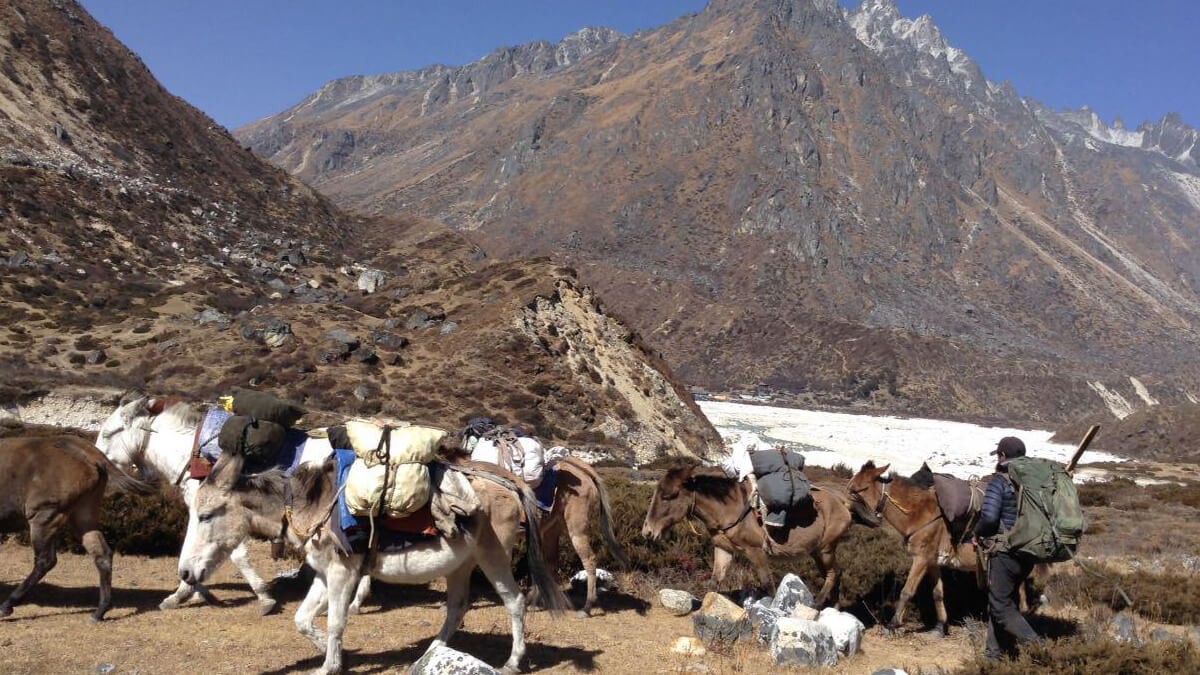
Conclusion
To sum up, despite being one of the most challenging treks in a remote region of Nepal, the Kanchenjunga trek is generally a rewarding experience. As was noted, the Kanchenjunga Base Camp trek is challenging due to its steep and rugged terrain, requiring a good physical fitness level and an essential backpack. However, travelers don’t need technical expedition skills but safety equipment and a well-experienced guide with expertise in navigating the region's paths. To tackle the Kanchenjunga Base Camp Trek difficulty, you must work hard before planning the excursion.
If you prepare very sensitively and heavily for the trek, it is possible to make it your dream journey. Novice trekkers find it very difficult to conquer it due to the Kanchenjunga route's difficulty, and it is generally not recommended for them. But if you have prior experience in the Himalayas and are physically and mentally prepared, you can embark on the journey. Therefore, don’t miss this golden opportunity, as we are here at Nepal Adventure Team, providing the best Kanchenjunga Base Trek package at the best rate. Don’t worry about a guide; we provide a licensed guide for the trek.
